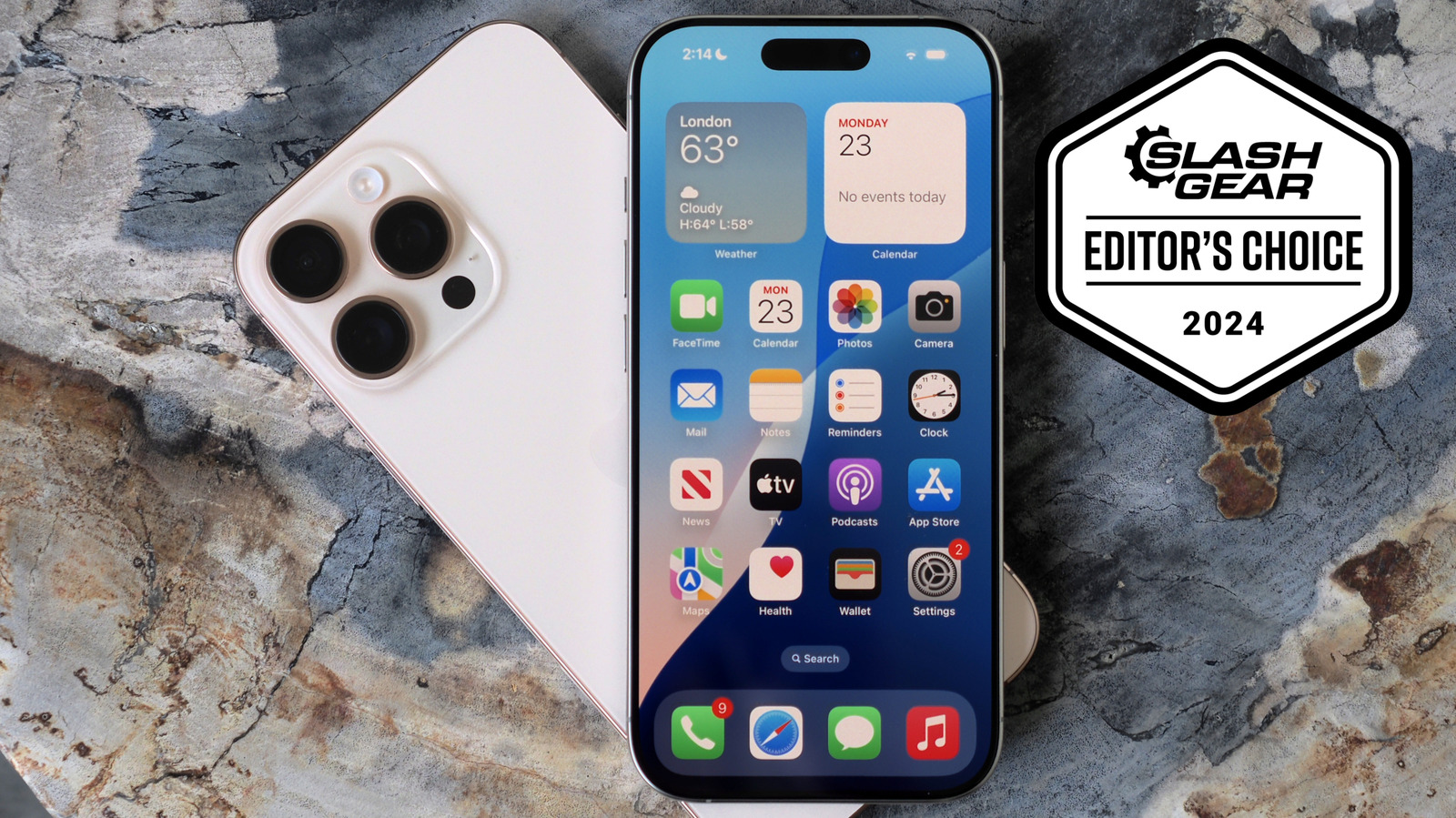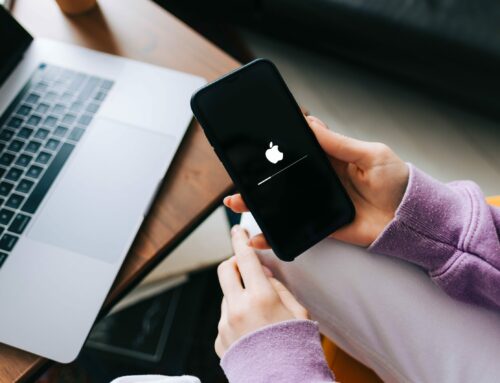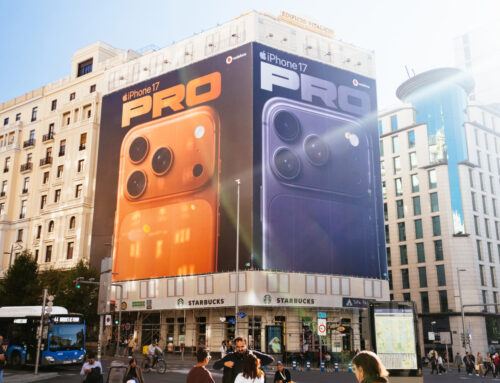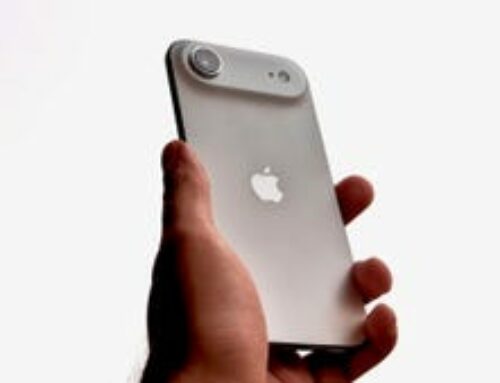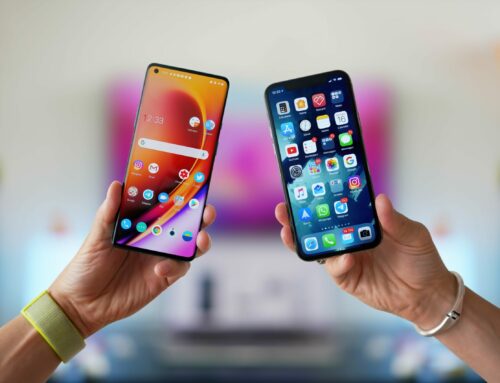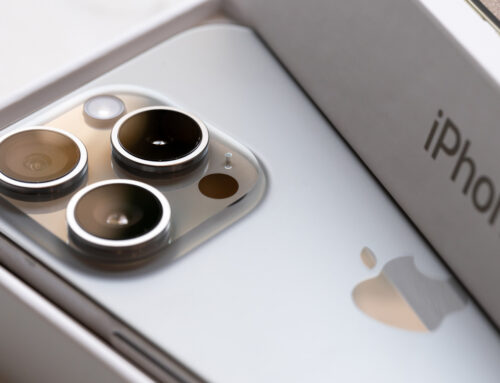Chris Davies/SlashGear
RATING : 9 / 10
- Impressive cameras with useful editing features
- Battery life gets a bump
- A18 processor is fast and future-proofed
- AI still MIA (for better or worse)
- Expensive
- Design hasn’t changed much
Whether the iPhone 16 Pro is untapped or unfinished is more than just a question of cynicism. Apple’s newest flagship smartphones — once again offered in regular and Max sizes — promise the fastest processors, the best photography, and the most impressive displays, but the AI side of all that is lagging the hardware. It means that the device you spend $999 or more on today isn’t, frankly, Apple’s true vision of what the iPhone 16 Pro ought to be.
Advertisement
As has been Apple’s strategy for the past few years, now, it’s refinement not revolution in the iPhone 16 Pro’s design. The frame is titanium, with a smooth, tactile microblasted finish; it’s sandwiched by two slabs of Ceramic Shield glass, which Apple says is twice as tough as rivals when it coms to toughness. I’ll be curious to see how it handles micro-scratches, mind, as in my experience Ceramic Shield is better at withstanding accidental drops, but picks up screen blemishes far more easily.
Chris Davies/SlashGear
The screen is a little bigger — 6.3 inches on the iPhone 16 Pro, and 6.9-inches on the iPhone 16 Pro Max — and the bezels a little smaller, though you’d need to have this generation and the previous side-by-side to really notice. It makes the phones themselves slightly larger, though even with my average-sized hands the Max doesn’t feel any more unwieldy than its predecessor did.
Advertisement
Chris Davies/SlashGear
There’s a bigger impact on daily quality of life from how dim the new screen can go: just 1 nit of brightness, which pays dividends in dark bedrooms when you don’t want to disturb your partner with your insomniac doom-scrolling. You can drag it to the minimum in iOS 18’s redesigned Control Center, which now splits its switches and buttons into three screens: Favorites, Music, and Wireless.
AI is coming (for better or worse)
Chris Davies/SlashGear
Running iOS 18 is the A18 Pro, and as expected Apple is calling it faster, more efficient, and better at handling the sort of machine learning tasks that AI demands. I’ve found it to be a little snappier when jumping between apps, or webpages in Safari, though iPhone 15 Pro users won’t notice a vast difference. It may be that the meaningful — and more obvious — gains aren’t unlocked until the various Apple Intelligence features roll out later in the year (and into 2025).
Advertisement
I’ll level with you, most of the AI features iOS is promising — and, for that matter, that Android, macOS, and Windows are increasingly weaving into their user experience — I don’t particularly want. Yes, being able to snip out the odd fire hydrant or rogue pedestrian from a photo can be slick, but I can write my own emails, manage my own tone, and don’t want the hallucination-prone (and environmentally questionable) ChatGPT near my data.
Chris Davies/SlashGear
Apple gets some credit for making much of its Apple Intelligence experience opt-in: you won’t have to use ChatGPT, for instance, and you can merrily ignore the various other features. Nonetheless, while some have criticized the iPhone 16 for launching without many of the abilities Apple’s marketing is leaning so heavily into — and which will be delivered in iOS updates — I’ve actually found it a fairly refreshing opportunity to see what the newest phone is like before it’s colonized by AI.
Advertisement
Better cameras, thanks to Fusion
Chris Davies/SlashGear
What we get today, then, is a refined iteration on the “Pro” iPhone experience. That’s particularly obvious in the camera, where new hardware and software combine in the name of making things easier, but also more flexible.
Advertisement
It’s an area where the Pro and Pro Max playing field is leveled, too: no longer is the 5x optical zoom — with its clever tetraprism lens — reserved for the larger phone. For 2024, there’s a 48MP (megapixel) primary Fusion camera capturing either 24MP or 48MP shots; it has a new sensor and new autofocus, promising swifter saves and better tracking. Hit the 2x button and Apple delivers a 12MP “optical-quality” 48mm equivalent, by effectively taking the center portion of the Fusion camera’s center.
Also new is a 48MP ultra wide camera, which also boasts improvements to focus and detail, and which handles macro shots at down to 2cm distance from the subject. There’s now the option to capture macros in ProRAW or HEIF Max for extra detail.
Advertisement
Camera Control isn’t just a shutter release button
Chris Davies/SlashGear
Altogether, the iPhone 16 Pro offers a span from 13mm through to 120mm focal lengths, but a new hardware button can help navigate that range. The Camera Control is effectively a shutter button blended with a touch-sensitive slider, on the lower right edge of the phone. It’ll act as a shortcut to your camera app of choice with an initial click, and then take a photo when you press it again.
Advertisement
However, the Camera Control can distinguish between full and lighter presses. Eventually Apple will add half-press-to-lock-focus, like traditional cameras offer, but for now a light double-tap summons a small menu for adjusting exposure, zoom, cameras, depth of field, tone, and Photographic Styles. After swiping your fingertip and pressing lightly to select, further swipes adjust each setting.
Chris Davies/SlashGear
It takes — a bit like the trackpoint nubbin on ThinkPad keyboards — a little getting used to, to figure out the right amount of pressure. Apple does let you tweak the sensitivity (and the button’s behavior) in the settings. You might also need to shift your usual grip, so that your finger falls on the correct place: I found myself wishing it was further down the body of the phone, so I didn’t have to reach quite so far. Still, it’s a useful addition — and holding it down automatically captures up to 4K 60fps Dolby Vision video — and third-party camera apps can tap into it, too.
Advertisement
Still great photos, but taste is subjective
Chris Davies/SlashGear
At the risk of sounding repetitive, the changes in picture quality over the previous-gen iPhone aren’t exactly night and day. The iPhone 15 Pro was capable of great photography, and the same holds true for the iPhone 16 Pro.
Advertisement
Chris Davies/SlashGear
Where in earlier iterations, Apple took a more light-handed touch to image processing compared to, say, the “house style” of Samsung’s Galaxy and Google’s Pixel, in recent years and with the increasing complexity of the Fusion pipeline, there’s been a more distinct hand in the tone of what ends up in your camera roll.
Chris Davies/SlashGear
Whether you like that or not is subjective. The multiple steps of processing, from what the sensor sees through to what’s shown on-screen, are doing a lot to lift shadows, tame highlights, boost colors, and finagle contrast and dynamic range. Sometimes the result of that is a near-magical image where vastly different lighting conditions are somehow evened out. Other times, photos can look a little flat and overly harmonized, in the name of achieving that balance.
Advertisement
Chris Davies/SlashGear
You could always dip into the gallery later, and tweak images to your liking. For 2024’s iPhones, though, if you’re not a fan of how Apple chooses to process its images, the newly-supercharged Photographic Styles make those tweaks (and more) possible in the same moment as shooting.
Photographic Styles graduates to a must-have
Chris Davies/SlashGear
Photographic Styles have been around on iPhone for some time, now, not so much filters as a way to precondition captured photos much in the way that different analog films had their own, distinct appearance. For the iPhone 16 Pro, Apple has addressed arguably their biggest flaw: that, once the shot was captured, there was no way to remove the Photographic Style. Now, you not only can change it later, but Apple offers far more control over how each Style affects the final image.
Advertisement
Photographic Styles are accessed with a new button in the top right corner of the camera app. There are multiple preset styles — like Luminous, Dramatic, and Cozy — which you swipe between, and a couple of small controls underneath. Dragging your finger across a square trackpad adjusts tone and color; a slider handles the intensity of the colors. If you’re capturing HEIF images you can open saved images and get the same controls for post-capture adjustment (though not if you’re saving JPEGs).
Chris Davies/SlashGear
Apple says these are more than just filters, like you might apply in Instagram before posting. Instead, it’s using the same computational image processing as its regular camera does, to tweak things like backgrounds while not leaving skin tones looking unnatural. It works on all cameras, front and rear, and is surprisingly good fun to play with. You can’t save (or share) a tweaked Style as a preset for use again later — which seems a shame, for a “Pro” camera — though you are able to copy the adjustment made to one image and batch-apply it to multiple others in the camera roll.
Advertisement
Video improvements most users won’t notice
Chris Davies/SlashGear
For video, meanwhile, there’s now 4K 120 fps support in Dolby Vision, across both regular and slo-mo modes, and Apple makes it super-simple to change the playback speed from 120fps to 24, 30, or 60 fps. Combined with some seriously good stabilization, I was able to take a bumpy plane landing video and turn it into something borderline cinematic. Cat zoomies will never look so good.
Advertisement
As before, there’s support for recording direct to external storage via the USB-C port; the iPhone 16 Pro adds ProRes and Log output up to 4k 120 fps. There’s also ACES — Academy Color Encoding System — support, which Apple says is a smartphone-first. Honestly, most people won’t know, or need to know, what that is, but it’s another nod to Apple’s insistence that the “Pro” in the name here isn’t just branding.
Spatial Audio capture is switched on by default for video recordings, though a stereo track is also kept simultaneously. The same smarts power Audio Mix, which allow a choice of Standard, In-Frame, Studio, and Cinematic modes to be selected for captured footage. If you’re often recording in louder spaces, and have previously used a plug-in microphone (or a wireless mic), then you might find you can get away without that now.
Advertisement
Longer battery life, same big price tag
Chris Davies/SlashGear
If cameras are what helps sell new phones, battery life is what can make for a daily frustration. Happily there’s a physically-larger battery inside both sizes of iPhone 16 Pro; it’s still early days, but I’ve found the percentage on the iPhone 16 Pro Max definitely drops slower than that of the iPhone 15 Pro Max. For charging, there’s now up to 25W MagSafe support; the iPhone 16 Pro’s USB-C port can still supply up to 4.5W to other devices, useful if you want to top up your AirPods 4.
Advertisement
As we’ve seen before, a lot of the flagship iPhone experience is about future-proofing. Features like Wi-Fi 7 multilink support probably aren’t, for most people, going to make much of a day-to-day difference right now. Yet, like the speedier A18 chipset, they’re ready for upcoming hardware and software upgrades that should leave the iPhone 16 Pro still feeling fresh.
That’s good, since Apple hasn’t made its Pro phones any cheaper this time around. You’ll pay from $999 for an iPhone 16 Pro with 128GB of storage, or from $1,199 for the Max version with 256GB. Splash out on the 1TB iPhone 16 Pro Max, and you’re looking at $1,599.
iPhone 16 Pro Verdict
Chris Davies/SlashGear
These aren’t inexpensive phones, and while Apple is counting on its upcoming AI features to help sell them, the reality is that the iPhone 15 Pro will also support Apple Intelligence. More battery life and ever-so-slightly larger screens are welcome, and the same goes for the camera upgrades (though ironically the biggest leap is more in how you finesse Apple’s computational photography, not so much the sensor changes and such).
Advertisement
You’d be forgiven, though, if — after Apple’s exceedingly smooth upgrade and data transfer process — you were left looking at your familiar home screen on your familiar-feeling new iPhone 16 Pro and wondering “wait, so what exactly is the big difference, here?” Apple Intelligence, for better or worse, will be that difference, and we’ll revisit the iPhone 16 Pro when that functionality graduates from its current beta status.
For the moment, though, while the iPhone 16 Pro and iPhone 16 Pro Max are undoubtedly Apple’s best Pro-branded devices yet, the current experience isn’t enough to say whether they’re the best flagship smartphones on the market. Those who need to live on the bleeding-edge may have already headed to their nearest Apple Store, cash in hand, but for everyone else a wait-and-see approach will probably pay dividends.
Advertisement

